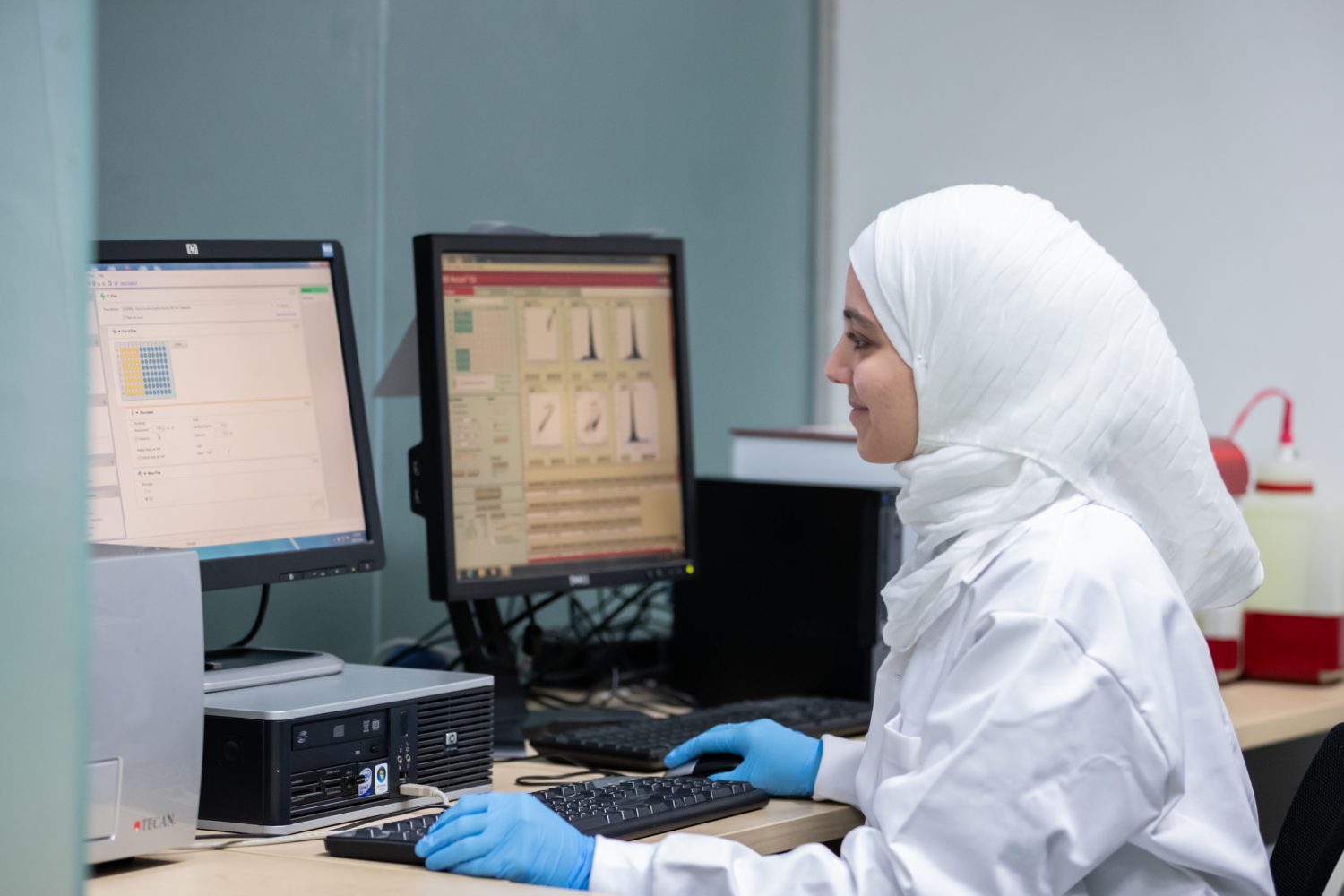Genome-wide Sequencing facility
This facility is equipped with several machines for high-throughput sequencing for human whole exome (WES) and whole genome sequencing (WGS). The technique allows the characterization of an unlimited number of genetic variations for a high number of samples. Sequencing enables precise and accurate construction of the target DNA.
Sequencing by Synthesis (SBS) is a technology utilizing a chip containing thousands of wells that DNA fragments attach to for amplification by polymerase chain reaction and sequencing. The amplified DNA is read by allowing one fluorescence-labelled nucleotide to bind to the amplicon in each cycle. This method is designed for the sequencing of large genomic segments.
Some of the noteworthy equipment used for whole genome and whole exome sequencing:
- The Illumina NextSeq 500 Sequencing System – delivers high-throughput sequencing and the flexibility to carry out applications such as whole-genome, exome, or transcriptome sequencing.
- The Illumina iSeq 100 System – is ideal for small genome, targeted, and amplicon sequencing, as well as viral and microbial sequencing.
- The Illumina MiSeq System – is an integrated instrument that performs clonal amplification, genomic DNA sequencing, and data analysis with base calling, alignment, variant calling, and reporting in a single run.
- The Illumina NovaSeq – provides access to a powerful, high-throughput genomics solution for making in-house WGS or WES studies faster and more affordable. It offers output up to 6 Tb and 20B reads in < 2 days. Multiple flow cell types and read length combinations offer flexible output and run time configurations based on project needs.
Sanger sequencing is a method suitable for sequencing specific and short DNA target areas such as genes and is also used to validate results generated from the other sequencers owned by the center. A special type of PCR called chain termination PCR is used to prepare the DNA fragments for reading. In this process, a small ratio of the nucleotide bases present in the reaction mixture lack a 3’-OH group (ddNTPs), thus when a ddNTP is incorporated into a growing chain, elongation is terminated. Then, the DNA fragments of various lengths are analyzed by gel electrophoresis for sequencing. The BTC uses an automated machine that combines Sanger sequencing and gel electrophoresis.
- The Applied Biosystems 3500 Genetic Analyzer is an automated 8 and/or 24 capillary instruments designed for a wide range of sequencing and fragment analysis applications. The 3500-series instruments are the first genetic analyzers designed with a specific feature set and workflow for the Human Identification applications including de novo sequencing and resequencing (mutational profiling)—as well as SNP validation or screening
